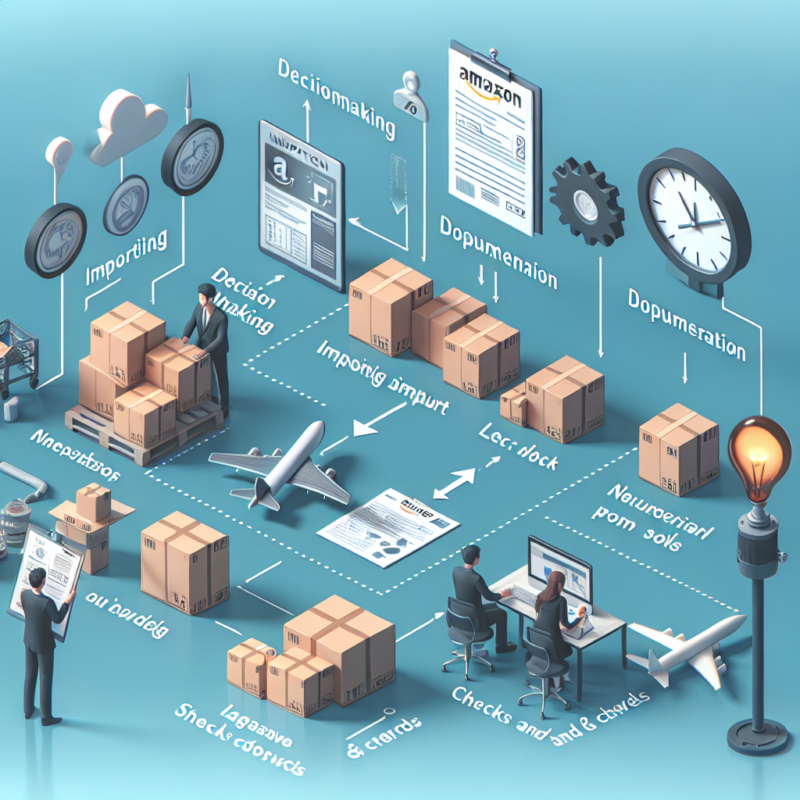Amazon eCommerce
The Basics of Importing Products for Amazon Sales
The Basics of Importing Products for Amazon Sales

Amazon, the world’s largest online marketplace, offers a lucrative platform for businesses to sell their products to a global audience. However, to maximize profits and ensure smooth operations, it’s crucial to understand the basics of importing products for Amazon sales. This article will delve into the key aspects of importing, including sourcing products, understanding import regulations, and managing logistics.
Understanding the Amazon Marketplace
Before diving into the specifics of importing, it’s essential to understand how the Amazon marketplace works. Amazon provides a platform for third-party sellers to list their products and reach millions of customers worldwide. Sellers can choose to fulfill orders themselves or use Amazon’s Fulfillment by Amazon (FBA) service, where Amazon handles storage, packaging, and shipping.
Sourcing Products for Import
The first step in importing products for Amazon sales is sourcing. This involves finding manufacturers or suppliers who can provide the products you want to sell. There are several ways to source products:
- Directly from manufacturers: This is often the most cost-effective method, but it requires a significant amount of research and negotiation.
- Through a sourcing agent: These are professionals who can help you find reliable suppliers and negotiate prices on your behalf.
- From wholesale markets: These are large markets where you can buy products in bulk at discounted prices.
When sourcing products, it’s crucial to consider factors such as product quality, supplier reliability, and cost. It’s also important to ensure that the products you source comply with Amazon’s product guidelines.
Understanding Import Regulations
Importing products involves navigating complex regulations and customs procedures. These can vary depending on the country you’re importing from and the type of product you’re importing. Some key aspects to consider include:
- Import duties and taxes: These are fees that you must pay to import goods into a country. They can significantly affect your profit margins, so it’s important to factor them into your cost calculations.
- Product regulations: Different countries have different regulations for different types of products. For example, electronic products often need to meet specific safety standards.
- Customs procedures: When goods are imported, they must go through customs. This involves declaring the goods, paying duties and taxes, and providing any necessary documentation.
It’s crucial to research these regulations thoroughly and consult with a customs broker or legal expert if necessary. Failure to comply with import regulations can result in delays, fines, or even the seizure of your goods.
Managing Logistics
Once you’ve sourced your products and understood the import regulations, the next step is to manage the logistics of getting your products from the supplier to Amazon’s warehouses. This involves several steps:
- Arranging shipping: You’ll need to arrange for your products to be shipped from the supplier to Amazon’s warehouses. This can be done by sea, air, or land, depending on the location of your supplier and the size and weight of your products.
- Handling customs: As mentioned earlier, your products will need to go through customs when they arrive in the country. You’ll need to provide the necessary documentation and pay any duties and taxes.
- Delivering to Amazon: Once your products have cleared customs, they’ll need to be delivered to Amazon’s warehouses. Amazon has specific requirements for how products should be packaged and labeled, so it’s important to follow these closely.
Managing logistics can be complex and time-consuming, but there are companies that specialize in this area and can handle it for you. These are known as freight forwarders, and they can be a valuable partner for Amazon sellers.
Case Study: Successful Importing for Amazon Sales
To illustrate the importance of understanding the basics of importing, let’s look at a case study. XYZ Company, a small business selling home decor items, decided to expand their product line by importing products from China to sell on Amazon. They followed the steps outlined above:
- They sourced high-quality products from a reliable manufacturer in China.
- They researched the import regulations for home decor items and ensured their products complied with these.
- They hired a freight forwarder to manage the logistics of shipping their products to Amazon’s warehouses.
As a result, XYZ Company was able to successfully import their products and start selling on Amazon. They saw a significant increase in sales and were able to expand their business further.
Conclusion
Importing products for Amazon sales can be a complex process, but with the right knowledge and resources, it can also be a profitable one. By understanding how to source products, navigate import regulations, and manage logistics, businesses can tap into the vast potential of the Amazon marketplace. As the case study of XYZ Company shows, successful importing can lead to significant business growth. However, it’s crucial to do thorough research and planning, and to seek professional advice if necessary, to ensure a smooth and successful importing process.

